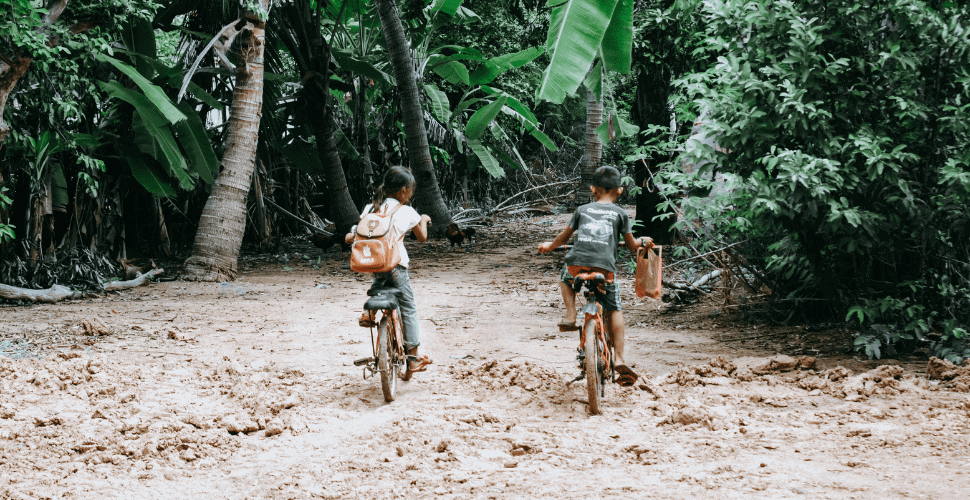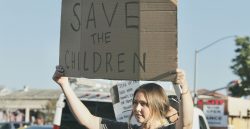It’s the time of year again when emotive and resolute messages about stamping out the evil of child labor begin to pop up suddenly on your newsfeed: June 12 is World Day Against Child Labor. You’ll likely be hearing about how we have just three years left to meet the well-intentioned goal of eliminating all child labor by 2025, as set out in Target 8.7 of the United Nations’ Sustainable Development Goals (SDG).
The Freedom United community actively campaigns to protect children from exploitation, including trafficking and modern slavery. As people join this cause, they often have extremely valid questions like: Are all working children being exploited? What does it actually mean to eliminate all child labor in practical terms? In what ways could these efforts risk exacerbating the conditions of working children around the world? And most importantly, what do working children and children exposed to child labor actually want for themselves and their families?
The issue of child labor is not simple. Here we try to break it down for anyone who wants to deepen their understanding of the issue and take their child rights’ campaigning to the next level.
Does eliminating child labor mean banning all children from all kinds of work?
The short answer is no. Although some groups and individuals may use the term to refer to any economic activity carried out by a child, the term, as used in Target 8.7, has a narrower definition.
The International Labour Organization’s (ILO) describes child labor as “work that deprives children of their childhood, their potential and their dignity, and that is harmful to physical and mental development.” [1] More specifically, the term refers to work that:
- is mentally, physically, socially or morally dangerous and harmful to children; and/or
- interferes with their schooling by: depriving them of the opportunity to attend school; obliging them to leave school prematurely; or requiring them to attempt to combine school attendance with excessively long and heavy work. [2]
ILO points out that what is and what is not considered child labor will depend on the age of the child, the type of tasks they carry out, the number of hours they work for, and the conditions they work in. And if that’s not confusing enough for you, the boundaries of this category also shift from country to country, and from sector to sector.
ILO has also highlighted a sub-category called “the worst forms of child labor” as a priority for elimination. This category includes: “children being enslaved, separated from their families, exposed to serious hazards and illnesses and/or left to fend for themselves on the streets of large cities – often at a very early age. ” [3]
While these definitions clearly exclude children conducting safe, age-appropriate work in their free time, they still leave a lot of room for interpretation. What’s more, cases of children in work will rarely fit neatly into either the category of safe, empowering work or that of exploitative and dangerous work, because the number of variables involved is truly endless.
In a feature article for openDemocracy, children’s rights researchers Claire O’Kane and Ornella Barros tackle the complexity of the issue head-on:
Children’s work and labour is a complex and multi-faceted issue, and understanding and responding effectively to it isn’t easy. There is evidence to show that children’s work can be both a means to, and a violation of, children’s rights to survival, development, protection and participation. For many working children, positive and negative aspects co-exist. Recognising this and the diversity of children’s work is where any serious conversation on addressing this topic must begin. [4]
How can anti-child labor activism be harmful?
When campaigning against the exploitation of children, we sometimes risk falling into the trap of presenting child labor as an inherently evil phenomenon which should be stamped out entirely. We imagine a child being kept away from their parents and forced to work in gruelling conditions from dawn until dusk. And while these cases do occur, they lie on the extreme end of a broad spectrum.
It’s worth noting the role of the ‘white savior complex’ in this oversimplification. Many organizations and individuals who campaign against child labor are based in the Global North whereas child labor is most prevalent in communities in the Global South. Experts have highlighted how campaigners’ own cultural lens can lead them to misunderstand the issue. “The current global effort to eradicate child labor is based on the experiences of the ideal of white, Western, middle-class childhoods,” as Tatek Abebe, professor of childhood studies at the Norwegian University of Science and Technology in Trondheim, told Thomson Reuters Foundation. [5]
This overly simplistic approach naturally leads us to focus more on prohibitionary action, rather than taking a more systemic view of the issue, and working toward structural changes that would improve the conditions of working children. And by banning children from working without addressing the factors that motivate them to work, we risk causing real harm to them and their families.
During the COVID-19 pandemic, the prevalence of child labor around the world rose. With their caregivers affected by illness, food insecurity and other crises, children and young people had to take on a more active role in looking after and generating resources for their families.
With the impact of the pandemic in mind, 101 professors and researchers wrote an open letter to the UN, UNICEF, and the UNCRC Committee, asking them to reconsider the goal and its timeline. They write:
Currently, there is a great danger that working children’s precarious situations can be further damaged by well-intentioned, but ineffective and potentially counterproductive pre-COVID-19 norms and practices that are primarily based on ideological and emotional convictions instead of scientific evidence and working children’s own experiences. [6]
Instead, they call for the sector to take into account and build on the strategies which children and their families are currently using to mitigate hardship.
So how can we support positive change for children?
As with all issues the Freedom United community campaigns on, we believe it is crucial to seek out and pay attention to the voices of people with lived experience. To ensure that our activism is supporting children around the world to stay safe from trafficking and modern slavery, we need to listen to what at-risk children are asking for.
Existing initiatives are already platforming the voices and requests of working children from around the world. “It’s Time to Talk!” was a global project, originally initiated by German NGOs Kindernothilfe and Terre des Hommes, that consulted more than 1,800 working children worldwide. Their research delved into the reasons why children work, the parts of their work that they like and dislike, and collated children’s key asks of people who could impact their experience, such as caregivers, governments, NGOs, employers, teachers, and more. They called for policies and practices to:
- reduce family poverty to ensure that their parents and caregivers have access to decent work, good livelihoods, services, and assistance;
- ensure free, quality, safe and inclusive education for every child and non-discriminatory access to other basic services (including birth registration);
- protect children from hazardous and harmful work and monitor implementation of the laws;
- improve working conditions, and support vocational training;
- listen to working children and involve them in practice and policy decisions affecting them; and
- prevent and protect children from violence. [7]
Although working children’s voices have often been excluded from conversations that affect them, the work of advocates and activists around the world is changing this. Last month, the Global Conference on the Elimination of Child Labour took place in Durban, South Africa, and for the first time ever, children were invited to participate in discussions with policymakers. Time will tell if their voices are being heard. The Freedom United community is all ears.
For more on this topic, watch our webinar, Do children have the right to decent work?
[1], [2], [3] https://www.ilo.org/ipec/facts/lang–en/index.htm
[5] https://www.reuters.com/article/us-global-childlabour-trfn-idUSKBN29X1JI
[7] https://www.dialogue-works.com/wp-content/uploads/2021/07/T2T_Report_EN.pdf







We should also be careful not to assume that all children in the global South actually have living parents or other persons willing to care for them. Nor should we assume that they would have access to education if they were not working. In many countries of the global South, education costs much more than poor families can afford. As written in the brief, the children whose lives are of the greatest concern can rarely lead lives of middle-class children in the global North – work or no work.
While dangerous, exploitative work may be detrimental to a child’s development, some limited work may enhance the child’s self esteem :the fact that s/he can contribute to the family’s upkeep through money earned. In rural communities around the world, children work in simple tasks , feeding animals, etc.. The alternative, schooling, does not exist for them. However, this needs the oversight of other adults.
I am heartened that you
understand that the childhood ideal of the little one, playing with their toys, kindergarden, with plenty of food on the table isn’t possible for a large tranche of the world, wish it was, and that to some extent at least this western expectation/right is even dependant on others not having that ideal, to support to some extent those that do, it’s called inequality
Our Activism through the platform of NGO (Right Track) in West Bengal, India, are as follow;
Let’s surport positive change for children, by surporting their education and also empowering their parents by helping them secure jobs or business.Also children can be trained with skills or Hand work so that they can avoid child labour